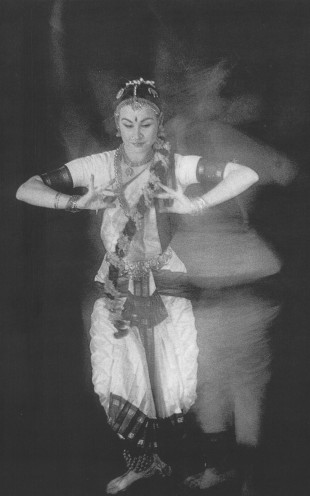BHARATANATYAM
Bharatanatyam is the classical dance of South India. It
has its origins in the ritual dancing of the devadasis, the temple
dancers, and in the classical rules of Indian theatre arts. The word Bharatanatyam
consists of the first syllables of the words bhava (expression),
raga (melody), tala (rhythm) and natyam (dance).

Bharatanatyam is an image of the perpetual cosmic dance and the yearning of the human soul for union with the absolute.
In the Vedas, the collection of ancient Indian literature, the gods and godesses are compared to dancers. The highest absolute manifests itself as Siva-Nataraja, king of all dancers, who´s cosmic dance represents creation, preservation and destruction of the world.
Modern physics has shown what Indian philosophy has found out through meditation: that movement and rhythm are the main properties of matter. The entire universe is in constant movement and activity. All matter takes part in the eternal cosmic dance.
With regard to the technique and the form of presentation nowadays, the most applicable comparison to Bharatanatyam would be the classsical ballet, although the spectrum of movements and the narrative contents of the dances are fundamentally different. The repertoire which received its form by four famous musicians and dancers from Tanjore in South India (Tanjore Quartet) in the 18th century, includes abstract and narrative dances in a particular sequence.
top | site map